Ardbeg’s latest annual Limited Edition release, Dark Cove, is being marketed as the “darkest Ardbeg yet”. I’m not sure if that’s supposed to mean visually or spiritually, but let’s just get this out of the way now: it looks like regular old whisky. This NAS (no-age-statement) bottling combines Ardbeg from ex-bourbon casks with a “heart” of Ardbeg finished in “dark sherry” casks. No details on how they’re defining “dark sherry” (or “heart” for that matter), but the Internet has decided this means heavily-seasoned sherry casks. The result is bottled without chill-filtration at 46.5% ABV. Expect it on shelves around May 28th, if the limited allocations don’t all sell out in preorder. Such is the nature of the whisky market today.
Like a lot of excellent peated single malts, Ardbeg Dark Cove fills the room with a heady scent of smoke and soft grains that evoke a plush cigar lounge or the elbow-polished wooden bar at a storied watering-hole. The liquid itself has the depth and complexity of aroma that one expects from Ardbeg. Still, at $125 or more at retail and no age statement, we must expect more from this Ardbeg. Does it measure up?
Thanks to Laura at the Baddish Group for the review sample!
Nose: Potent. Fresh-cut cigars, boggy campfire, roasted cocoa nibs, and soft malty grains. A rest in the glass reveals some uncharacteristic pear notes. If I really concentrate I can identify some of the citrus (lime peel?) notes that are so redolent in Corryvreckan. I smell nothing that suggests sherry, let alone “dark sherry” – whatever that is.
Palate: Somewhat syrupy body. A flood of chocolate arrives on the tongue, followed by a torrent of hot (young) alcohol. The floodwaters quickly recede, leaving cayenne-spiked Mexican hot chocolate, black pepper, smoked paprika, and smoldering oak firewood.
Finish: Long. A little peppery, with dusty cocoa powder, ashy woodsmoke, and tobacco. My lips actually feel and taste like I’ve just finished a short cigar.
With Water: A few drops of water have little apparent effect on the aroma. They do bring out a little tartness on the palate, though, without diminishing it. I’d say water is optional here.
Overall: An odd duck. The nose is pretty much standard Ardbeg – perhaps even a little muted – almost a disappointment. But then it washes the tongue with the strongest chocolate note I’ve experienced in a whisky. The peat comes across as smoked pepper and smoky spices (paprika), which combine to create an unmistakable flavor of spicy Mexican hot chocolate. The bottling strength is appropriate, but I do wish they’d used a larger percentage of older Ardbeg to subdue some of that fiery youth on the tongue. I also wish they’d used much more of the sherry-finished liquid, as the balance could use a little punch of dried fruit.
As much as we rely on Ardbeg to show what’s good about NAS (like my vote for NAS poster child, Corryvreckan), I feel that they went a little too far here in the use of young whisky and held back on the older stuff. At $125 a bottle, I’d expect some more hallmarks of old whisky, OR some deeper sherry flavor. Despite those faults it’s an excellent whisky, and far better than the standard 10-year Ardbeg. At $125 a bottle, though, I’d personally rather drink Corryvreckan for 2/3 the price.


About The Distillery
East of Lagavulin and Laphroaig on the southern coast of Islay, Ardbeg is known for being among the most heavily-peated single malts made. Their Uigeadail and Supernova (>100 ppm) bottlings push the envelope on palatable levels of peat (measured in Phenol parts-per-million, or ppm). Ardbeg’s water travels a long journey, first from Loch Uigeadail, which is the highest loch (~250m) in the quartzite hills of Islay. The water flows over hard quartzite, via the Ardilistry River, into the man-made Loch Iarnan. Finally, the soft water flows over heavy peat bogs to the distillery via the Ardbeg Burn. Like most [all?] of the other Islay distilleries, its malted barley comes, by specification, from the maltings at Port Ellen. Ardbeg used to have its own kiln-fired maltings, which were unusual due to a lack of a fan in the roof. This caused a heavy, tar-like influence of the peat smoke, which added to the inherent peat character in the Islay water. The maltings was closed in 1977, so Ardbegs casked before the late 1970s should still exhibit that old characteristic tar and smoke.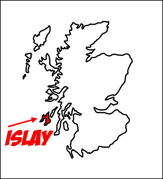


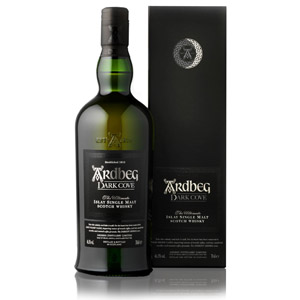
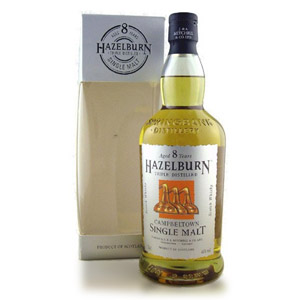
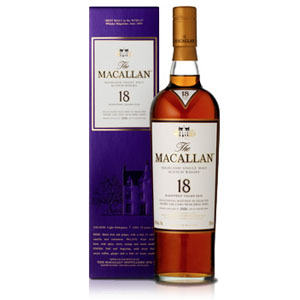
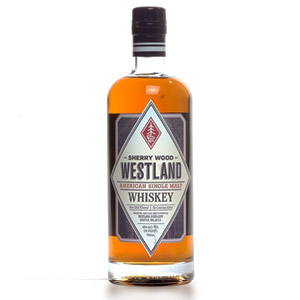
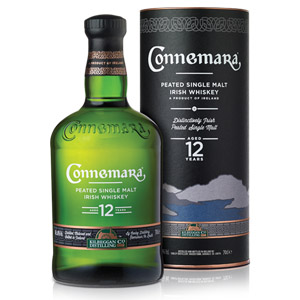
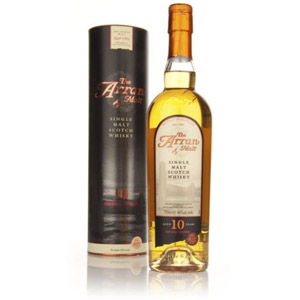
If there’s one thing I’ve noticed in the Whisky world of blogging, it’s that peaty-smoky scotches tend to have a much more vocal and passionate following. The perception is that this branch of whisky is more in line with how scotch ought to be made. When I read reviews or ratings of campfire ash, cigar smoke like scotches, they are all seemingly in the 90’s or high 80’s. If they aren’t getting numbers than they are almost always getting A’s and B+’s. Personally, I have to be in the mood for them. I have a bottle of Laphroaig 10, Ardbeg 10 and a Talisker in my bar but I favor Dalmore 12, 15 & 18, or Ben Nevis, Macallan 12 and even Auchentoshan American Oak – yes these have their fans but they also have many who turn their nose to them in favor of smoke.
I applaud your unfavorable review in what is a sea of positive reviews for Ardbeg’s latest incarnation. It’s actually refreshing to see someone step up and go, no thank you. Just because a classic brand name of whisky fills a bottle with a smoky scotch, doesn’t mean one needs to fall down and fawn over it as it seems most have done.
Hi Brien, thanks for the comment! I personally find that my affinity for smoky scotch ebbs and wanes. When I first started out, it was the most fascinating of the whiskies I was trying (and also the most different from other spirits I’d experienced). Now, I find that I prefer whiskies that pair with a state of relaxation – something flavorful and luxurious but unchallenging – so I, like you, have to be “in the mood” for something peated. This holds true for cask-strength malts as well – I used to revel in the density and challenge of enjoying them undiluted. Now, I have to be in the mood for something that will take a layer of skin off of my tongue. 🙂 Still, every time I pour out a dram of Corryvreckan I’m reinvigorated by the sensations that come with an excellent cask-strength peated malt.
Cheers!
I am the guy who Brien speaks of. I lean towards peaty scotches that have a sherried influence. Ardbeg is my favorite brand with Corryvrecken being my number one seed. We enjoyed Dark Cove. It reminded a couple of us of Glenmorangie Quinta Ruben with a little smoke. I do agree it’s priced too high considering that it’s not on Corryvrecken’s level, which again I believe to be the best scotch in the game. Fortunately, I can get it here, just outside of DC, for $92. Unfortunately for Dark Cove, I can get Corry for $80(this month it’s on sale for $69!!!).
I enjoy your reviews btw!!!
It’s true that Corryvrecken is good and that it’s NAS; that would be some kind of endorsement of the marketing if it could be argued that it’s good BECAUSE it’s NAS, but that’s a case that can’t made any more than it’s good because it’s in a green bottle. As your review suggests (” I feel that they went a little too far here in the use of young whisky and held back on the older stuff”), age, even if withheld, does matter to these products and, while age is certainly not equivalent to quality, the idea that products are good, bad or indifferent somehow regardless of their age shows the flaws in the thinking behind NAS (particularly in that it’s thinking that somehow applies only to whiskies that the industry itself selects). Like any other whisky, Corryvrecken is no less a product of its age than its strength or its casking.
Hey, Jeff said something like what I wanted to say! 🙂
Let’s consider this idea: “As much as we rely on Ardbeg to show what’s good about NAS…”
Now, since NAS is 100% a quality of the whisky label as opposed to the whisky itself, I’m not sure what, exactly, we can say is “good about” it. It’s a label type that withholds information that (presumably) all of us would prefer to have. So what’s good about that?
To be technical, “NAS” is not just an attribute of the label – it’s a methodology that allows whisky producers to use a wider range of cask ages for more dynamic blending without scaring off potential customers with low minimum legally-required age statements. In other words, if the law was rewritten to require age statements on all whisky labels, “NAS” would die off, taking with it the good (Corryvreckan and a’bunadh come to mind) and the bad (Macallan “color” series, for example).
No whiskymaker would bother to release a carefully-tuned, exquisite blend of old and young whiskies (like Corryvreckan) if they had to put a “5 years old” (or whatever) on the label, despite the 5 year-old whisky being only 5% of the blend, and there only to add brightness or vibrancy. (That’s an example, not real numbers).
As a consumer, what I want to know is what the components of the blend are (barrel type, age, grain variety, whatever) and at what percentage of the total. However, that information is BY LAW required to be kept from consumers (see the whole Compass Box Transparency Campaign for more on this). If a producer of whisky like Corryvreckan bucked the trend and put a “5 years old” on the label, that doesn’t really give me any more information than the previous label did. In fact, it’s misinformation. The thing is, on average, 9 to 12 years old. Not 5.
There is, of course, the very valid counterargument that NAS allows producers to sell younger (aka cheaper) whisky for the same (or more) than an equivalent age-statement. Macallan has done exactly this, by removing age statements and replacing those bottlings with NAS blends named by color (bah), for basically the same price.
The problem is not NAS. The problem is the law requiring producers to keep component details a secret, and/or the incredible explosion of demand that (without NAS) would wipe many of our favorite malts off of the shelf.
But NAS ≠ multi-vintaging.
And what you say WOULDN’T work in the marketplace (a 5-year age statement) is exactly what we see WORKING in the marketplace with Octomore.
I seriously doubt Ardbeg would stop producing Oogie and Corryvreckan if age statements were required.
But I agree that producers should be able to give the entire recipe.